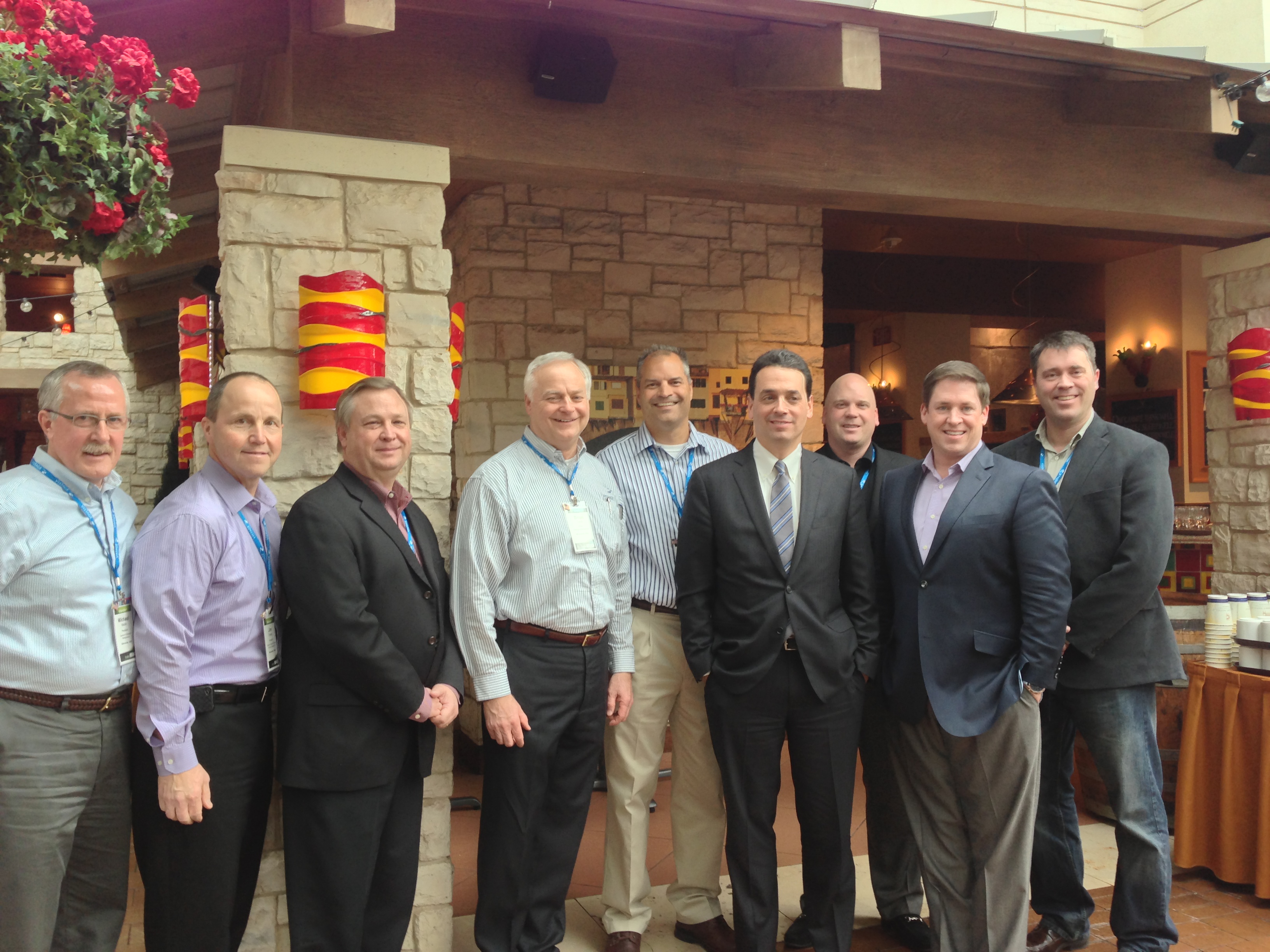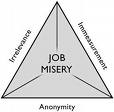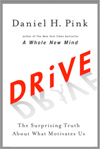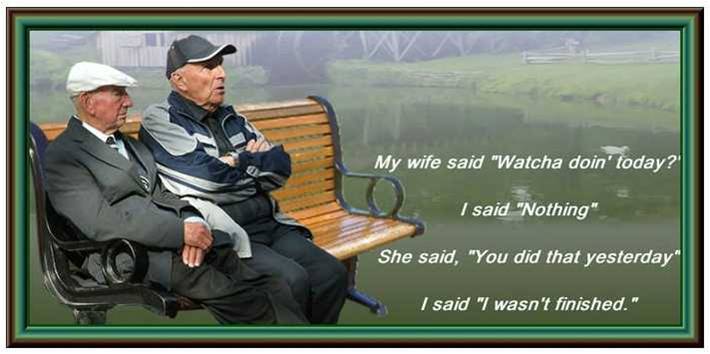Leadership Catalyst Blog

Exercise Mythbusters for Vistage CEOs
Motivation / 09.03.2016
I meet with over 70 CEOs, Business owners, and executives every month in the four Vistage CEO private advisory boards I lead. Most of the CEOs in my groups understand the importance of regular exercise for keeping them at the top of their games, however, a majority of them, including myself, have bought into several myths about how to exercise. Many CEOS made New Year’s resolutions about improving their health, but like most of us, have fallen off of their good intentions 30 days into the new year. Some of the CEOS who have been successful in developing a discipline of exercising daily don’t realize that they are wasting a lot of precious time due to fitness myths, and they are being counterproductive in their efforts.
 Luke Carlson is a Vistage member and speaker, exercise physiologist, former NFL strength coach, competitive marathoner, and one of the most respected experts in evidence based resistance exercise. Luke recently met with my Vistage groups to help us dispel some fitness myths and design an intelligent exercise program that would require no more than two 30-minute exercise sessions a week. I have worked with Luke to outline a few of the most dangerous myths below.
Luke Carlson is a Vistage member and speaker, exercise physiologist, former NFL strength coach, competitive marathoner, and one of the most respected experts in evidence based resistance exercise. Luke recently met with my Vistage groups to help us dispel some fitness myths and design an intelligent exercise program that would require no more than two 30-minute exercise sessions a week. I have worked with Luke to outline a few of the most dangerous myths below.
Myth 1. “Cardio” is the key to weight loss.
Mythbuster 1. If your goal is weight loss, the most effective approach is always a combination of improving your eating habits and then recharging your metabolism by increasing muscle mass via strength training.
Go to any health club and you will see scores of people laboring on treadmills, elliptical machines, and spin bikes. Ask them what their goal or objective is and they will tell you that they are trying to burn calories or lose weight. What they fail to understand is that while they are burning more calories during the one-hour that they are exercising, their body is actually burning fewer calories for the remaining 23 hours of the day following their workout. The reason? After we perform a bout of cardio or aerobic exercise, the number of calories we burn the remainder of the day, known as Energy Expenditure due to Physical Activity or simply “EEPA” decreases. Stated otherwise, after we perform a bout of cardio, we find a way, both consciously and subconsciously to be less active and expend less calories the rest of the day. In controlled experiments, subjects who exercise 60-minutes per day expend no more calories at the end of the day compared with subjects who perform no cardio whatsoever.
 Don’t believe it? Here is another factoid: People who train for and then run a marathon (often with a hidden intent to lose weight), despite hundreds of hours of running (and literally tens of thousands of calories expended), on average, end up weighing the same or more on the day of the marathon compared to before they started their training. Additionally, they fail to improve their body fat percentage. This is in no way denigrating cardio. Instead, we simply need to understand that cardio isn’t very effective for weight loss; the primary benefit of cardio is improving your cardiovascular system and health, as its name suggests.
Don’t believe it? Here is another factoid: People who train for and then run a marathon (often with a hidden intent to lose weight), despite hundreds of hours of running (and literally tens of thousands of calories expended), on average, end up weighing the same or more on the day of the marathon compared to before they started their training. Additionally, they fail to improve their body fat percentage. This is in no way denigrating cardio. Instead, we simply need to understand that cardio isn’t very effective for weight loss; the primary benefit of cardio is improving your cardiovascular system and health, as its name suggests.
Myth 2. The best way to increase muscle mass and muscle strength is by strength training several times a week.
Mythbuster 2 Doing resistance training more than twice a week will generally slow your results, and for most executives, you will get 85% of the benefit doing resistance training only once per week.
We reap the many benefits of strength training not during the training session itself, but during the recovery from the training session. The training session should be viewed as the stimulus, and in order to respond to the stimulus, we need to make sure we provide adequate rest and recovery. As Luke explained, building strength is similar to building a callus. If you rub a spot on the back of your hand with a piece of sandpaper every few days, you will soon build up a callus (the callus is a response to a stimulus). If you were to rub your hand too frequently, you will gain a blister rather than a callus. It is often our fervor for producing better results that impedes our progress. With strength training, less is more.
 Myth 3. The best way to increase your strength is to perform three sets for each exercise.
Myth 3. The best way to increase your strength is to perform three sets for each exercise.
Mythbuster 3. One properly performed set of each exercise will stimulate all of the health and muscle building benefits of strength training.
Muscles can’t count, so it doesn’t matter if you end up with 7 reps or 17 reps; instead, focus on continuing each set to the point of “momentary muscle failure”; the point where another perfect rep can’t be performed. The main focus should be to lift and lower the weight slowly, thus eliminating momentum. This makes the exercise more effective as it maximizes the tension on your muscles while also making the exercise safe because the forces your joints are exposed to are minimized.
Luke Carlson’s exercise prescription for the busy executive:
- Strength train once or at most twice per week, with each workout consisting of one set of 8-12 exercises done to momentary mujscle failure and lasting approximately 30 minutes.
- Strength train once or at most twice per week, with each workout consisting of one set of 8-12 exercises done to momentary mujscle failure and lasting approximately 30 minutes.
- Perform one to two high intensity interval cardio training sessions per week, with each session lasting 30 minutes. You can walk/run or use an elliptical, bike or treadmill. Warm up for 5 minutes and then do 10 two minute intervals where you exercise as hard as you can for 30 seconds and then rest for 90 seconds. As your conditioning improves, exercise as hard as you can for 1 minute and then rest for 1 minute. The key to improving over time is to keep increasing the intensity of your workouts by increasing your speed, the incline of your treadmill, or the resistance of your elliptical. Finish off your workout with 5 minutes of light exercise or cool down
- Lead an active lifestyle and do activities you enjoy and consider leisure rather than “working out.” It can be biking, walking, golfing, or playing with the kids. The key is that it shouldn’t feel like a chore. If you love to run or jog, do it.
- This total time commitment of 1-2 hours of focused, intense exercise per week and an active lifestyle will maximize fitness, stimulate a myriad of health benefits, and bolster an executive’s performance.
Luke’s Mythbusters have inspired myself and eight of my Vistage members and several of their spouses to try out his methodology at the Discover Strength gym. We have been pleased with the results thus far and we are spending the extra time previously devoted to the treadmill with our families and friends.
Read More >>
Leadership Lessons From a 4 Year Old
All Blog Posts, Coaching, Motivation / 05.03.2014
We all need a little inspiration sometimes, and my inspiration today came from the story of an amazing 4 year old in Minnesota who started an outreach that has raised almost $20,000.
To kick off my monthly Vistage Executive Peer Group meetings, I often start by having members mention a business and personal highlight for the month. This serves to reconnect everyone and helps members transition to a day of working “ON’ the business rather than working “IN” the business. Last week Jim Glomstad, General Manager of SporTech, mentioned that Valentines day was a pretty big deal for his family because of his daughter Carly.
When Carly was four, she read a book about a girl that loved Valentine’s day so much she spent days making Valentine cards and goody bags and delivered them to everyone in town via her little red wagon. Carly loved the idea of doing something that would make many people feel special, and she decided to imitate her storybook hero in real life.
Carly raised $450 in her first year which allowed her to distribute 125 goody bags to kids at a crisis nursery and seniors at assisted living residences – people who she thought might need to feel special. That was 6 years ago, and she has expanded her outreach every year. This year she raised nearly $5,000 and delivered 500 goodie bags and cards while also funding a kids connection scholarship and donating to the crisis nursery.
She has her own website, (carlyvalentine.com) and last year she was featured on Kare11. She has raised almost $20,000 over the last 6 years.
Here are some leadership lessons I think we can all learn from this 4 year old:
1. Communicate a compelling vision – Carly wasn’t content to deliver a few goodie bags on her own street. She wanted to cheer up kids who were sick and seniors who may not get any visitors.
2. Go all in. Carly was willing to invest her life savings ($48.76 from her piggy bank) to make her vision a reality.
3. Create a vision larger than yourself. Carly inspired her parents, her family, her kindergarten class, and her girl scout troop to join her in her mission.
4. Follow your passion. Carly truly loves making people feel special, which fuels her willingness to do whatever it takes to get the job done and grow her outreach every year.
5. Have great mentors and a strong support system. Carly couldn’t have done this without the support and coaching of her parents, Jim and Tina Glomstad.
Thank you to the Glomstad family for being great role models and an inspiration to us all!
Read More >>
Lessons in Leadership Legacies via Peyton Manning and Shaun White
Motivation, Vistage Peer Groups / 13.02.2014
Many of us were disappointed in the quality of the 2014 Super Bowl Game, but undoubtedly none more so than Bronco’s quarterback Peyton Manning. Common sense says it’s not fair to judge a career by one event, but popular culture seems programmed to only remember the big wins and losses. The real legacy can get lost; namely the often invisible influence and impact one’s action and character had on others throughout the career.
A fan who understands what legacy is really all about out reached out to Manning through a letter in the Denver Post. Laurie Lattimore-Volkmann shares, why Manning’s legacy was secure well before Sunday’s game. Click here for the one page letter written from the perspective of a mother and a life-long Broncos fan.
Shaun White won back to back half pipe snowboarding gold medals in the Torino and Vancouver Olympics and he was the favorite coming into yesterday’s finals in Sochi. White ended up finishing just off the podium in 4th place, but he was gracious as ever in congratulating the winner. Kare11 just ran a neat story that illustrates the profound impact that Shaun White has had on a local Twin Cities boy. White’s 4th place finish in Sochi will make him no less of a hero in Jet’s eyes.
Take a moment to reflect on your legacy as a leader in your company. What would your people say about you? What one thing would you like to change starting today?
Read More >>When does telecommuting work well, and how can we make it more effective?
All Blog Posts, Motivation, Vistage Peer Groups / 13.03.20133 comments
 The newest occupant of the corner office at Yahoo made a tough and surprising call a couple of weeks ago when she put an end to telecommuting. Despite being new to the company and expecting her first child, Marissa Mayer has evidently taken a hard look at how things work at beleaguered Yahoo and decided the work at home option that so many of her employees had chosen may be more of a problem than a solution. Learn why columnist Anne-Marie Slaughter in her recent article in the Atlantic thinks that Marissa Mayer’s Job is to be CEO, Not Make Life Easier for Working Moms.” This article, unsurprisingly, prompted not a little controversy. (Check out the numerous comments at the end of the article for an interesting discussion.)
The newest occupant of the corner office at Yahoo made a tough and surprising call a couple of weeks ago when she put an end to telecommuting. Despite being new to the company and expecting her first child, Marissa Mayer has evidently taken a hard look at how things work at beleaguered Yahoo and decided the work at home option that so many of her employees had chosen may be more of a problem than a solution. Learn why columnist Anne-Marie Slaughter in her recent article in the Atlantic thinks that Marissa Mayer’s Job is to be CEO, Not Make Life Easier for Working Moms.” This article, unsurprisingly, prompted not a little controversy. (Check out the numerous comments at the end of the article for an interesting discussion.)
 Within a couple of days of the Yahoo announcement, Best Buy’s new CEO, Hubert Joly, made the same call by putting an end to the practice of ROWE (Results Only Work Environment) that Best Buy had popularized, and which allowed employees to work at home as long as they were achieving their objectives. The new Best Buy policy does allow for some telecommuting exceptions at management’s discretion.
Within a couple of days of the Yahoo announcement, Best Buy’s new CEO, Hubert Joly, made the same call by putting an end to the practice of ROWE (Results Only Work Environment) that Best Buy had popularized, and which allowed employees to work at home as long as they were achieving their objectives. The new Best Buy policy does allow for some telecommuting exceptions at management’s discretion.
During my one-to-one coaching sessions with my Vistage CEO Peer Group members, I have found a wide range of opinions on this. Some say this totally validates their distrust of work at home policies. Others recognize that they have scores of geographically distributed people productively working out of their homes, and that centrally locating these people is not feasible or desirable. In either case, telecommuting is probably not going away entirely, and we need to better understand in what situations it works and how we can make it more effective.
That is where you come in. So kind readers, please reply to this post with your comments.
 In your experience when has telecommuting worked well? When has it failed? What are some best practices you have put in place to make it better?
In your experience when has telecommuting worked well? When has it failed? What are some best practices you have put in place to make it better?
I am looking for your brief observations and quick stories of a paragraph or less in length. In a couple of weeks I’ll summarize your answers and add some insights of my own on how to get the most out of telecommuting. Thank you for participating!
Read More >> Last week I was in Fort Myers for Spring Training and had a chance to go to a Twins/Red Sox baseball game with my family, including my 2 ½ year old grandson. While the Twins lost, it was still great to get outside and watch the pros work on their game. It was also a reminder that professionals at the top of their game need to continually practice the fundamentals that got them there if they want to stay there.
Last week I was in Fort Myers for Spring Training and had a chance to go to a Twins/Red Sox baseball game with my family, including my 2 ½ year old grandson. While the Twins lost, it was still great to get outside and watch the pros work on their game. It was also a reminder that professionals at the top of their game need to continually practice the fundamentals that got them there if they want to stay there.
As a Vistage Chair, my “Spring Training” was at the International Think Big Conference in Dallas last month. I joined 400 other chairs from around the world to practice our fundamentals of running meetings, processing issues, coaching CEOs, and building strong groups with the best of the best. I further refine these fundamentals with fellow chairs in the twin cities at our monthly chair meetings. This continued focus on practicing the fundamentals of great coaching and leading peer group meetings is one of the things that sets Vistage apart from other CEO peer group organizations.
Last week a CEO in one of my peer groups was trying to decide whether he and his partner had lost their ability to bring in business because their revenues were behind plan. They had always been highly successful in the past, and there were plenty of opportunities in the pipeline. Further questioning by the group led to the insight that they were spending a lot of time on opportunities that were outside of their sweet spot. The group helped him better define his target customer so he could focus his sales and marketing efforts there, rather than chasing opportunities that were outside of their core. Finally, they suggested that he and his partner go on a few joint calls to make sure they were executing good sales fundamentals, and had not fallen into some bad habits.
So, when was the last time you went to spring training? Just because you have been in your role a long time does not mean you are doing it better now than you were earlier in your career. Find a mentor, coach, or peer group that can help you periodically practice the fundamentals that have made you good at what you do.
Read More >>Is Passion Over-rated???
All Blog Posts, Motivation / 20.02.2013
Last month Daniel Pink joined one of my Vistage Groups at lunch while we were attending the Vistage International Think Big Conference in Dallas. His book entitled “Drive” on intrinsic motivation was the subject of one of my early blog posts a couple of years ago, and I have been an admirer of his work ever since. We enjoyed chatting with him about what it takes to be a successful author, and how he transitioned to that role from a highly successful career in politics.
 Career transition is on the minds of a few of the CEOs in my group as they think about what they would like to do next. As the CEOs of their companies, they have a lot of options–do they continue to grow the business in their current role? Do they hire someone to run it for them, and focus on new product development or other activities that they really love? Do they sell the company and start a new one? Or do they retire?
Career transition is on the minds of a few of the CEOs in my group as they think about what they would like to do next. As the CEOs of their companies, they have a lot of options–do they continue to grow the business in their current role? Do they hire someone to run it for them, and focus on new product development or other activities that they really love? Do they sell the company and start a new one? Or do they retire?
Daniel Pink talked with us about how he decided to become a writer. He continuously heard from others that he should just follow his passion. The problem was, he couldn’t really identify anything he could say he was passionate about. After casting about for quite a while, his wife suggested that rather than look for his passion, he should just focus on what he does and how he spends his time. As he thought about, he had always been a writer. Before being the lead speech writer for President Clinton, he was always writing articles, whether it was for the high school or university newspapers, trade publications or associations. No matter his workloads or deadlines for his day jobs, he always found time to complete his volunteer assignments on time, even if it meant doing them after midnight the night before a packed agenda.
And so, he decided to become a writer. He said that writing a book takes him about two years — one for research and one to write the book. It is hard and frustrating work, especially when you have a goal of 60,000 words, you spend all day writing 600 words, realize it’s crap, tear it up, and start over. When he is in the middle of writing a book, he would seldom say that writing is his passion, but it is what he does.
So next time you are helping someone think about their next life chapter, don’t just ask them about their passion–ask them what they do.
Read More >>Vistage member recognized for his commitment to developing his people
All Blog Posts, Motivation, Talent Management / 07.02.2013
Too many entrepreneurs hit a growth ceiling because they fail to build a strong leadership team beneath them. Vistage members know that to grow their business, they need to grow their people and themselves. Michael Lacey, CEO of Digineer, is featured in the February 2013 issue of Minnesota Business for the development of his leaders and his people.
The article features 3 examples of how investing in executive education has produced mutually beneficial results for the employees and their companies across various industries. The article highlights Michael’s support of Digineer manager Erin Wright in her participation in the Minnesota High Tech Association (MHTA) ACE Leadership program.
A significant financial and time commitment were involved in completing the ACE Leadership Program and both Michael and Erin are seeing the positive impact of Digineer’s investment. Michael’s commitment to developing his people extends beyond just the leadership team. “Lacey makes sure Digineer employees have the time they need to learn and experience in both formal and informal environments. In fact, most of the 125 Digineer employees have been or are currently involved in a variety of continuing education programs.”
What a great model to aspire to – congratulations Michael, and thank you for setting a high bar for all of us.
Read More >>Stop Multitasking and Get More Done!
All Blog Posts, Motivation / 30.01.2013
 Busy executives often pride themselves with their ability to multi-task, believing they are getting far more done than if they were simply completing one task at a time. Last week there was an interesting article by Paula Bilitz in the Minneapolis Star Tribune (Click here) suggesting that Multitasking is just Switchtasking. In it she cites compelling Neurological evidence that the brain cannot effectively do two things at once. In fact, it is less efficient than doing one thing at a time, because switching costs result when people need to review what they have done before resuming work.
Busy executives often pride themselves with their ability to multi-task, believing they are getting far more done than if they were simply completing one task at a time. Last week there was an interesting article by Paula Bilitz in the Minneapolis Star Tribune (Click here) suggesting that Multitasking is just Switchtasking. In it she cites compelling Neurological evidence that the brain cannot effectively do two things at once. In fact, it is less efficient than doing one thing at a time, because switching costs result when people need to review what they have done before resuming work.
It is also just plain rude. As author Dave Crenshaw points out in his book The Myth of Multitasking: How Doing it All Gets Nothing Done, “Multitasking is a polite way of telling someone ‘I haven’t heard a word you’ve said.’”
One of the ground rules we use in our Vistage Executive Peer Advisory Meetings is something we call the “Airplane Rule”. During the meeting, all cell phones and email devices are switched off. We allow time for email and phone calls during breaks, but during the meeting time we want everybody to be fully present and engaged. I find our meetings are incredibly more productive than ones I frequently experienced in the corporate world. Try turning off your phone at your next meeting.
Read More >>
Ten Game Changing Tips for CEO Personal Productivity
All Blog Posts, Motivation, Vistage Peer Groups / 31.05.20121 comments
As members in my CEO peer groups have been getting a grip on their business through the implementation of “Traction”, a new challenge has emerged – How to make the best use of time that was previously spent in countless meetings and in constantly fighting fires. In other words, how do they more effectively use their found time to work “ON” their business rather than “IN” their business.
 Last week we had Steve McClatchy, CEO of Alleer, help us do just that. Most of us had been through various time management programs, and understood the “importance vs urgency” distinction when prioritizing tasks.
Last week we had Steve McClatchy, CEO of Alleer, help us do just that. Most of us had been through various time management programs, and understood the “importance vs urgency” distinction when prioritizing tasks.
However, all too often, urgency trumps importance, and deadlines tend to dictate how we spend our time. This keeps us in a reactive, rather than a proactive mode, which means most of our time is spent managing or maintaining our businesses, rather than leading and improving our businesses.
Here are 10 game changing tips from Steve McClatchy:
1. There are two major categories of tasks — Gain Tasks ( “A” priorities) and Prevent Pain Tasks (“B” & “C” priorities).
“Gain Tasks” produce the greatest results in terms of achieving your goals and improving your life or business. They are things you really want to do, they are motivating, and accomplishing them is energizing and creates the feeling of balance in your life. However, you don’t have to do them, you can’t delegate them, and they are never urgent. These should be your “A” priorities. The only person that can place an “A” on your task list is you. Everyone else’s “A”s are your “B”s and “C”s
“Prevent Pain” tasks are things we “have to” do, and are maintenance tasks which keep us where we are. They will eventually all become urgent, and can burn us out. Prevent Pain tasks are “B” priorities if their results are being recorded and “C” priorities if no one else will know if we completed them or not. Delegate “have to” tasks whenever possible.
2. Intersperse your “A” tasks with your “B” and “C” tasks throughout the day.
This will help you accomplish your “A”s, energize you to accomplish your “B” and “C” tasks, and will create the feeling of balance and movement toward your goals. If you do your Prevent Pain tasks first, you will never get to your Gain tasks and will experience burnout.
3. Schedule your “A” tasks on your calendar to assure they get done.

People make decisions on how to use their time, based on their calendar, not their task list! Getting your “Gain”tasks on your calendar dramatically increases the probability that you will complete them.
4. Have one location to record all of your tasks, appointments, contacts notes and emails.
Keep it with you always, on your smartphone, tablet or PC, and get rid of all floating pieces of paper. For each task or email, touch it only once and decide to :
— Do it now if it takes less than 2 minutes
— Do it later and schedule it on your calendar or to do list.
— Don’t do it ever.
— Delegate it
5. Create daily and future to do lists using tasks in outlook, lotus notes, etc. by entering the date the task is to be started and when it is due.
This is the key to delegation, goal achievement, and stress reduction. Don’t overwhelm yourself and kill your productivity with one giant to-do list. By using an outlook task list, you can parse your master to do list into 365 daily to do lists (one for every day of the year) by simply putting in a start and completion date. Don’t waste time looking at tasks you are not going to get to today. For more ideas, go to: http://www.alleer.com/Article-TMTip1.htm
6. Keep ONE calendar!
You can still keep communication calendars (like work and home), but everything on a communication calendar needs to be on your calendar. You will save yourself an unbelievable amount of time and aggravation if you and your spouse can access one another’s calendars through outlook, google or iCalendar. Make sure everything syncs through the cloud. If you have non-compatible devices (PC/Apple) and don’t have an exchange server, you can “rent” one over the cloud for about $6/month at sherweb.com.
7. Keep great notes!
For a low tech option, keep one spiral notebook that you log all notes chronologically by date.
 Tablet computers are ideal for this purpose. The main challenge is retrieval, so keep it simple and take notes where you can always quickly find them. For example, create an outlook contact for each of your employees, and keep a running journal on all of your conversations in the notes section of each contact. You can also record performance examples there, along with topics you want to cover the next time you talk. Do the same for all of your peers, boss, customers, and even your kids.
Tablet computers are ideal for this purpose. The main challenge is retrieval, so keep it simple and take notes where you can always quickly find them. For example, create an outlook contact for each of your employees, and keep a running journal on all of your conversations in the notes section of each contact. You can also record performance examples there, along with topics you want to cover the next time you talk. Do the same for all of your peers, boss, customers, and even your kids.
There are also applications like onenote, evernote, and notes that let you take notes by date, topic and contact. The advantage with these applications is that they sync with all of your devices so that they are always accessible.
8. Become a power user of Outlook, Lotus notes, or Apple apps.
Learn to drag emails into tasks, calendar and contacts so that you have that information when you need it — When you are working on it or when you are in a meeting. You can also drag tasks into your calendar so you can easily schedule them
Turn your standard emails and templates into “signatures”. You can have over 75 different signatures that contain full emails. The advantage is that when you need to send a standard email, you can click on “new” and then right click anywhere on the signature, which will generate a drop down box with all of your signatures. Click on the one you want, change the salutation and anything else you want to customize, and then hit send.
9. Implement email protocols and best practices.
Email, while a great tool, can be an incredible personal and organizational waste of time. When you calculate all of the time it takes to set up, address, write, and edit an email, most people are only communicating at 5 – 10 words per minute. Contrast this with texting, which is 10 – 20 words per minute, Instant messaging, which is 30 – 40 words per minute, and voice mail, which is 150 – 250 words per minute.
Huge amounts of time can also be saved by having people limit their distributions lists and by not hitting “reply all” on their responses.
Finally, make sure you are managing your email, and not letting it manage you. Turn off your email new item alert window and sound — You have enough interruptions. Check it a couple of times a day, and otherwise, stay focused on accomplishing your “Gain” tasks for the day.
10. Manage interruptions to stay productive and accomplish your “Gain” tasks.
The key, says McClatchy, is to limit the interruption to the 2 minutes of actual work required by the interruption, which usually falls into 3 categories: A task someone wants you to complete, an appointment they want you to schedule, or an exchange of information. For some great tips on how to do this directly and in a way that builds rather than hurts relationships, go to Managing Interruptions.
Read More >>A Death in Cupertino | The Right Kind of Tyrant
All Blog Posts, Motivation, Vistage Peer Groups / 11.10.2011
“ Remembering that I’ll be dead soon is the most important tool I’ve ever encountered to help me make the big choices in life; because almost everything —all external expectations, all pride, all fear of embarrassment or failure — these things just fall away in the face of death, leaving only what is truly important. Remembering that you are going to die is the best way I know to avoid the trap of thinking you have something to lose.
You are already naked. There is no reason not to follow your heart.”
Steve Jobs
1955-2011
Founder and CEO of Apple
From his Stanford University Commencement Address, 2005
Picking an article to share with you about the passing of Steve Jobs is an impossible task with so many that knew him sharing their impressions on one of the most important entrepreneurs in history.
We have a saying in Vistage: “We invite CEOs to our group but human beings show up.” To get a sense of what was important to this truly remarkable and essestial human being, I’d like to share with you the 15 minute video of his 2005 Stanford Commencement speech. I found it incredibly inspirational, and I hope you will share it with your friends, family and employees.
This inspiring speech, however, should not blind us to the fact that Steve Job’s management style was often very different from the warm, fuzzy and friendly feeling you get from using his products or visiting the Apple store at the mall. For some insights into the management style that made Apple the most valuable company in America, check out this article which suggests that if Steve Jobs was often a hard man to work for, he was, in fact, “The Right Kind of Tyrant.”
Thanks, Steve, for all you have given us. Rest in Peace
“Immeasurement”: The Third sign of a Miserable Career Transition
All Blog Posts, Change, Motivation / 29.05.2010
This is the final post in a three part series summarizing a presentation I recently gave to the CPI Executive Forum on how to keep yourself motivated, engaged and positive as your job search extends from weeks, to several months, to over a year. I have been applying Lencioni’s “Three signs of a Miserable Job” paradigm to career transition, because people often describe transition as one of the most miserable jobs they have ever had.

Avoid being miserable like Toby durring your career transition!
Having covered how to avoid “Anonymity” and “Irrelevance” in my previous two posts, I will now focus on “Immeasurement”, a term Lencioni coined for jobs in which:
- Clear means of assessing progress are lacking
- Measures are outside of your control
- Measures don’t tie directly to purpose
One key to avoiding “immeasurement” in a career transition is effective individual time management. Unfortunately, for many executives, this skill has atrophied with the reliance on executive assistants to schedule their time and when Franklin Planners were replaced by Microsoft Outlook. They need to get back to having their daily activities and calendar being driven by their meaningful objectives and placing a weekly planning and review session on their calendars to “count” their successes and plan their next week’s priorities. Otherwise, it is far too easy to drift and waste time on low yield activities.
 “Take Back Your Life!” by Sally McGhee and John Wittry is a great book that shows how to implement David Allen’s “Getting Things Done” approach to time management using Microsoft Outlook. The authors walk you step by step on how to configure MS Outlook into a single dashboard that organizes your tasks, your calendar, and your files around your objectives, and provides a control panel on one screen that enables you to track your progress. One of the tips I find particularly helpful is the use of categories by which you can color- code tasks and appointments according to objectives. (For example, use green for networking meetings, teal for networking calls, blue for interviews, and red for on-line marketing activities.) In addition to meetings, also schedule time blocks for completing specific tasks on your calendar. (E.g. Outbound calls and emails to set up networking meetings, LinkedIn search engine optimization (SEO), Internet research , blog posts and tweets.) By scheduling and color-coding all of your tasks as well as your meetings on your calendar, you provide a graphic visual on how you have spent your time this week and what you have planned for next week. If you see too much white space next week or not enough networking time (green), start making some calls!
“Take Back Your Life!” by Sally McGhee and John Wittry is a great book that shows how to implement David Allen’s “Getting Things Done” approach to time management using Microsoft Outlook. The authors walk you step by step on how to configure MS Outlook into a single dashboard that organizes your tasks, your calendar, and your files around your objectives, and provides a control panel on one screen that enables you to track your progress. One of the tips I find particularly helpful is the use of categories by which you can color- code tasks and appointments according to objectives. (For example, use green for networking meetings, teal for networking calls, blue for interviews, and red for on-line marketing activities.) In addition to meetings, also schedule time blocks for completing specific tasks on your calendar. (E.g. Outbound calls and emails to set up networking meetings, LinkedIn search engine optimization (SEO), Internet research , blog posts and tweets.) By scheduling and color-coding all of your tasks as well as your meetings on your calendar, you provide a graphic visual on how you have spent your time this week and what you have planned for next week. If you see too much white space next week or not enough networking time (green), start making some calls!
The second key to avoiding immeasurability in your career transition is knowing what to count and setting daily and weekly goals for those metrics. You are much more likely to feel a sense of accomplishment at the end of the day if you achieve daily goals you can control, rather than simply chaining yourself to your desk all day to “work on your job search”. (E.g. set up 3 networking meetings for next week, submit resume with strong cover memo to job posting, connect with hiring manager through LinkedIn connections, complete talking points for next week’s interview, obtain 3 additional contacts and 2 introductions from this afternoon’s meeting, register for next month’s networking event, schedule self for 2 hour shift at Feed My Starving Children.) Set reasonable goals, but don’t stop until you achieve them. If you need to make 5 more phone calls to set up one more meeting, do it. If you have to work after dinner to finish your blog post, do so. You will find that you will be working harder and enjoying it more! Make sure to include personal goals regarding family, fitness, fulfillment and fun to avoid burnout.
Finally, put a recurring weekly planning and review session on your calendar to celebrate your successes, evaluate your progress and time allocation, and plan next week’s priorities. If you find it difficult to hold yourself accountable, schedule it with a friend in transition, and hold each other accountable.
♦♦♦♦♦♦♦♦♦♦♦♦♦♦♦♦♦♦♦♦♦♦♦♦♦♦♦♦♦♦♦♦♦♦♦ LEADERSHIP CATALYST TIPS ♦♦♦♦♦♦♦♦♦♦♦♦♦♦♦♦♦♦♦♦♦♦♦♦♦♦♦♦♦♦♦♦♦♦♦
To avoid “immeasurement” during your career transition, assess your progress weekly (if not daily) with relevant measures that are under your control.
- Use Sally McGhee’s approach to configure MS Outlook to align and manage your time and tasks against your career transition meaningful objectives.
- Manage by results, setting and achieving reasonable daily and weekly quantifiable objectives.
- Set a recurring weekly appointment with yourself or a partner to review your progress, time allocation against priorities, plans for next week and hold yourself accountable.
- Ultimately, avoiding a miserable career transition is about learning to count—Why you count and add value as a person, how what you do counts, and what to count on a daily basis.
♦♦♦♦♦♦♦♦♦♦♦♦♦♦♦♦♦♦♦♦♦♦♦♦♦♦♦♦♦♦♦♦♦♦♦♦♦♦♦♦♦♦♦♦♦♦♦♦♦♦♦♦♦♦♦♦♦♦♦♦♦♦♦♦♦♦♦♦♦♦♦♦♦♦♦♦♦♦♦♦♦♦♦♦♦♦♦♦♦♦♦♦♦♦♦♦♦♦
Read More >>Irrelevance: The Second Sign of a Miserable Career Transition
All Blog Posts, Change, Motivation / 20.05.2010
 In my May 13th post, I talked about how Lencioni’s three signs of a miserable Job are often present during career transition, and addressed how to avoid his first sign: anonymity. Today I am focusing on how to avoid the second sign–irrelevance. Before doing so, however, I want to broaden the context of career transition to include not only job search, but also transitions such as retirement, staying home to raise a family or be a caregiver, or even making a transition from college to your first professional job. All of these transitions require a recalibration of why you count, how you count, and what you count. For simplicity, in this post I’ll continue to illustrate my points with job transition examples.
In my May 13th post, I talked about how Lencioni’s three signs of a miserable Job are often present during career transition, and addressed how to avoid his first sign: anonymity. Today I am focusing on how to avoid the second sign–irrelevance. Before doing so, however, I want to broaden the context of career transition to include not only job search, but also transitions such as retirement, staying home to raise a family or be a caregiver, or even making a transition from college to your first professional job. All of these transitions require a recalibration of why you count, how you count, and what you count. For simplicity, in this post I’ll continue to illustrate my points with job transition examples.
Irrelevance occurs when you have trouble seeing how what you are doing really makes a difference. For example, after months of networking with no job offers, it is easy to become discouraged and question whether you are just wasting your time. As my friend Kari once quipped, “at the end of the day, how do you know if it was a good day, or just a waste of make-up?”

The key to avoiding irrelevance is to break your goal of finding a job down into a handful of meaningful objectives, driven by supporting projects, which in turn, help you prioritize and balance your daily activities. If you don’t, you run the risk of getting lost in an endless sea of tasks–networking, searching the internet, completing on-line applications, perfecting your resume, and trying to develop an online presence through LinkedIn, twitter, or blogging. All of these things are important, but without seeing a direct connection between your daily activities and your intermediate objectives and your ultimate goal, it is easy to become disengaged, and well, miserable.
♦♦♦♦♦♦♦♦♦♦♦♦♦♦♦♦♦♦♦♦♦♦♦♦♦♦♦♦♦♦♦♦♦♦♦ LEADERSHIP CATALYST TIPS ♦♦♦♦♦♦♦♦♦♦♦♦♦♦♦♦♦♦♦♦♦♦♦♦♦♦♦♦♦♦♦♦♦♦♦
To avoid irrelevance during your career transition:
- In addition to career transition goals, set meaningful personal goals in areas such as: Family/friends, finances, fitness, fulfillment and fun. Setting and achieving measurable goals in each of these areas enables you to maintain balance and a positive attitude, which is critical to a successful job search. For example:
- Fulfillment: Give back. Engage in 2 community activities per month that help you feel productive, engaged, and self-confident. Each of these components can be missing when going through career transition, so creating opportunities to fill that gap will help you achieve greater success in the job search process.
- Set an overarching career transition goal with several quantifiable supporting objectives. For example, “Generate a cumulative 3 year income of $300,000, doing what I love and providing enough flexibility to achieve my personal goals.” Examples of supporting objectives for this goal include:
- Generate at least 2 interesting job offers by 12/31.
- Discover 5 relevant openings within 1 week of their initial posting by 12/31
- Schedule 12 face to face meetings per month with target companies through personal networking by 12/31.
- Attend at least 4 networking events per month.
- Generate 4 job leads per month through my on-line presence on LinkedIn, a blog, and twitter. Possible supporting projects might be:
- Optimize LinkedIn so I am among the top 3 people identified when searching on key words by which I want to be found and so I appear in 50 searches a day.
- Blog at least weekly and increase the number of views to 25 a day.
- Use this hierarchy to drive your weekly calendar and significant next actions, and you will be able to measure your progress on a weekly basis, and avoid “immeasurability”, the third sign of a miserable career transition, and the subject of my next blog post.
♦♦♦♦♦♦♦♦♦♦♦♦♦♦♦♦♦♦♦♦♦♦♦♦♦♦♦♦♦♦♦♦♦♦♦♦♦♦♦♦♦♦♦♦♦♦♦♦♦♦♦♦♦♦♦♦♦♦♦♦♦♦♦♦♦♦♦♦♦♦♦♦♦♦♦♦♦♦♦♦♦♦♦♦♦♦♦♦♦♦♦♦♦♦♦♦♦♦
Read More >>A few weeks ago I was asked to speak to a group of executives in career transition about how to keep themselves engaged and on top of their game throughout their job searches. While transition is described by many as a “real growth experience” once they have landed, during the search the majority say that “looking for a job is the most miserable job they have ever had”. At some point, almost everyone finds themselves “miserable” and feeling stuck or unmotivated.
One of my favorite leadership books is by Patrick Lencioni and is entitled “Three Signs of a Miserable Job”. It is a parable about a CEO who retires earlier than expected after abruptly selling his company. Retirement is not an easy transition for him, and after moving to the mountains to pursue his passion for skiing, he goes back to work managing a local, rundown pizza parlor. Along the way, he learns a number of lessons about how to engage and motivate people to dramatically improve business results.
In his book, Lencioni summarizes the three signs of a miserable job on pages 221-222 as follows:
“Anonymity: People who see themselves as invisible, generic, or anonymous cannot love their jobs, no matter what they are doing.”
“Irrelevance: Everyone needs to know that their work matters to someone. Anyone. “
“Immeasurement: Without a tangible means of assessing success or failure, motivation eventually deteriorates as people see themselves unable to control their own fate.”
Lencioni’s lessons are equally valuable in preventing you from becoming miserable and disengaged during your career transition. This is the first of a three part series with tips on what to do when you see each of these signs during your job search, and how to avoid becoming the people in the above picture.
Avoiding Anonymity: There is an old saying that “If you are what you do, who are you when you don’t?”  Most executives have put a disproportionate share of their eggs in the career basket, and it is easy to feel invisible when they no longer have a job. Networking and social situations in general can be uncomfortable for people feeling embarrassed about being unemployed. Also, executives are not used to people not immediately returning their calls or emails. Finally, many of their friends were work-related, and they have lost a primary source of community. A natural reaction is to focus on home improvement projects or individual hobbies, and further inadvertently make themselves more invisible, and ultimately more miserable.
Most executives have put a disproportionate share of their eggs in the career basket, and it is easy to feel invisible when they no longer have a job. Networking and social situations in general can be uncomfortable for people feeling embarrassed about being unemployed. Also, executives are not used to people not immediately returning their calls or emails. Finally, many of their friends were work-related, and they have lost a primary source of community. A natural reaction is to focus on home improvement projects or individual hobbies, and further inadvertently make themselves more invisible, and ultimately more miserable.
♦♦♦♦♦♦♦♦♦♦♦♦♦♦♦♦♦♦♦♦♦♦♦♦♦♦♦♦♦♦♦♦♦♦♦ LEADERSHIP CATALYST TIPS ♦♦♦♦♦♦♦♦♦♦♦♦♦♦♦♦♦♦♦♦♦♦♦♦♦♦♦♦♦♦♦♦♦♦♦
To avoid anonymity as a source of misery during your career transition, do the following:
- Develop a concise career brand or identity statement. When people ask you what you do, don’t lead with ”I am unemployed” or “I am in transition” or “I used to work for…”. Lead with your identity statement and then mention you are in transition and the specific type of opportunity you are seeking. For practical help on this, go to http://www.careerdistinction.com/
- Get involved in groups that will provide a sense of community (e.g. church groups, exercise classes, clubs, volunteer organizations, non-profit boards, transition support groups, your kids activities). The key is to find a group of people who value you for who you are (not for what you do) and miss you when you are not there.
- In social gatherings with friends, give a quick update of your status and move on. People want to know but are uncomfortable asking. On the other hand, they don’t want to feel that your primary purpose for coming is to “network”.
- Maintain a healthy balance between social and job search activities. Career transitions currently are averaging 13 months–They are a marathon and not a sprint. If you focus all of your energy on your job search, you may burn out. If you don’t spend enough time on it, you won’t make any progress.
♦♦♦♦♦♦♦♦♦♦♦♦♦♦♦♦♦♦♦♦♦♦♦♦♦♦♦♦♦♦♦♦♦♦♦♦♦♦♦♦♦♦♦♦♦♦♦♦♦♦♦♦♦♦♦♦♦♦♦♦♦♦♦♦♦♦♦♦♦♦♦♦♦♦♦♦♦♦♦♦♦♦♦♦♦♦♦♦♦♦♦♦♦♦♦♦♦♦
Read More >>Driving Business Results through Employee Engagement
All Blog Posts, Business, Coaching, Motivation, Strategy, Team Building / 08.05.2010
A couple of months ago, I highlighted Daniel Pink’s work on intrinsic motivation in my February 24th blog post entitled “When Traditional Motivation Doesn’t Work”. I concluded that post with the following tips.
♦♦♦♦♦♦♦♦♦♦♦♦♦♦♦♦♦♦♦♦♦♦♦♦♦♦♦♦♦♦♦♦♦♦♦ LEADERSHIP CATALYST TIPS ♦♦♦♦♦♦♦♦♦♦♦♦♦♦♦♦♦♦♦♦♦♦♦♦♦♦♦♦♦♦♦♦♦♦♦
In several turnaround situations, I have found the key to motivating and engaging employees is to:
- Make them feel valued as people and that they belong
- Help them see how what they do makes a difference, and
- Find a way for them to monitor their own contributions on an ongoing basis.
♦♦♦♦♦♦♦♦♦♦♦♦♦♦♦♦♦♦♦♦♦♦♦♦♦♦♦♦♦♦♦♦♦♦♦♦♦♦♦♦♦♦♦♦♦♦♦♦♦♦♦♦♦♦♦♦♦♦♦♦♦♦♦♦♦♦♦♦♦♦♦♦♦♦♦♦♦♦♦♦♦♦♦♦♦♦♦♦♦♦♦♦♦♦♦♦♦♦

- Employee Engagement
I recently stumbled upon a research study which validates these principles, shows how employee engagement and customer loyalty drive financial results, and illustrates how to execute these principles in a grocery store environment. The study was sponsored by the Coca-Cola Retailing Research Council and is entitled “Getting to Great: Mapping Management Practices that Drive Great Store Performance”.
The article is about 30 pages long, but well worth the time, even if you aren’t in the grocery business. Historically, the key to success in store operations has been seen as execution, and “command and control” has been a dominant leadership approach. Seeing how the above principles of employee engagement work in this situation should increase our confidence that they will work in situations involving more ambiguous and complex challenges. Below is a quick recap of their findings.
First, how do we know a great performer when we see one?
- “Great performers are those that overachieve relative to their market potential, not just those with the highest financial results.” Store results are a function not only of the leader’s performance, they are tremendously impacted by the store’s location, customer potential, competitive intensity, and store specific factors. The researchers devised a clever way of controlling for these external factors to show which store managers are executing most effectively against the strategic hand they have been dealt. (pp. 4-6)
- “Great Performers generate intense customer loyalty”.
- “Great performers produce strong employee loyalty and commitment.”
Second, what are the key management practices that great performers use to get these results?
- “Get clarity and commitment to goals. The great performers focused on the one or two most vital goals for improving their store’s performance and put their full focus behind them. By contrast, the more goals there were, the fewer were achieved with excellence.
- Get everyone to focus on the key drivers. Enlist each team member daily to take actions that have the greatest impact on achieving the main goals.
- Implement simple mechanisms to propel goal achievement. Post visible, compelling scorecards in accessible workplace locations.
- Establish a constant cadence of engagement and accountability around the key measures and goals.”
While this is a good recap, go to the report for the specifics of how to measure great performance results and the specific leadership behaviors that lead to it. It is sure to be a catalyst for ideas on how to do the same in your business!
Read More >>Algebraic Proof that Tubby Smith’s Gophers became the Best Team in the Country after working with a Leadership Catalyst!
All Blog Posts, Change, Coaching, Motivation, Team Building / 02.04.2010
On March 1st, I posted a blog about Tubby Smith bringing in a Leadership Catalyst (sports psychologist) after winning only 3 of 10 Big Ten games. On the eve of the final four, it’s time to assess whether the team really improved after that.
The gophers showed dramatic improvement, winning 7 of their last 10 conference games. They ended up beating every Big Ten team making the NCAA tournament, including impressive wins in the Big Ten Tournament against #11 MSU and #6 Purdue, which won the gophers their own invitation to the “Big Dance”. They were the only team in the nation to beat two of the Final Four teams (Butler and MSU) and beat teams that beat Duke (Wisconsin) and beat West Virginia (Purdue). According to the Algebraic Transitive Property of Inequalities (see proof below), that makes the Gophers the best team in the nation.
There you have it – mathematical (and tongue in cheek) proof that the Gophers are #1.
Congratulations Tubby, on your 17th consecutive 20 win season (21W – 14L)!
♦♦♦♦♦♦♦♦♦♦♦♦♦♦♦♦♦♦♦♦♦♦♦♦♦♦♦♦♦♦♦♦♦♦♦ LEADERSHIP CATALYST TIPS ♦♦♦♦♦♦♦♦♦♦♦♦♦♦♦♦♦♦♦♦♦♦♦♦♦♦♦♦♦♦♦♦♦♦♦
According to the Transitive Property of Inequalities,
If a < b and b < c, then a < c
Likewise:
If a > b and b > c, then a > c
If Minnesota > Wisconsin and Wisconsin > Duke, then Minnesota > Duke
If Minnesota > Purdue, and Purdue > West Virginia, then Minnesota > West Virginia
Minnesota > Butler
Minnesota > Michigan State
Therefore,
Minnesota > All Final Four Teams
♦♦♦♦♦♦♦♦♦♦♦♦♦♦♦♦♦♦♦♦♦♦♦♦♦♦♦♦♦♦♦♦♦♦♦♦♦♦♦♦♦♦♦♦♦♦♦♦♦♦♦♦♦♦♦♦♦♦♦♦♦♦♦♦♦♦♦♦♦♦♦♦♦♦♦♦♦♦♦♦♦♦♦♦♦♦♦♦♦♦♦♦♦♦♦♦♦♦
How to talk to people about their potential for advancement.
All Blog Posts, Assessment, Coaching, High Potential Programs, Leadership Development, Motivation, Performance Management, Succession Planning, Talent Management / 31.03.2010

- Discussing Leadership Potential
Several organizations go through great lengths to identify their high potential leaders (HIPOs), and then seem to operate on a “don’t ask/don’t tell” policy. They fear that informing the HIPOs will cause them to coast or develop a sense of entitlement. Furthermore, they worry that those that are not deemed as HIPOs may feel they have no future and decide to leave or slack off. On the other hand, if you don’t inform the HIPOs, your brightest stars may assume their advancement opportunities with you are limited, and take that next headhunter call. Other organizations wanting to upgrade their talent are more than willing to tell them how bright their future will be with them, even if you are not.
One of the things that gets in the way of these discussions are the assumptions some organizations are making as they communicate potential including:
- Potential is a single trait—it’s not. It varies by management level and is multi-dimensional.
- You have it or you don’t. Not true, it is a continuum.
- It doesn’t change. Again, not true. A key component of potential is the person’s aspirations and interests, which can change with life circumstances and experience.
- Performance and potential are treated as independent measures (e.g.” 9 box grids”). From a motivational and retention perspective, there is tremendous power in letting performance “trump” potential, especially at lower management levels.
Thinking about potential as a dynamic, continuous, multi dimensional construct dramatically improves the quality of these discussions, particularly when done within the context of performance discussions. If you assume that performance trumps potential, the key message to everyone is that before you can be promoted to the next level, you need to become a top performer (e.g. top 20%) in your current role. That means the discussion for 70-80% of your people is focused on the “what’ and “how” of this year’s performance, celebrating their successes and figuring out how to fill their gaps. The main message for people who are not yet top performers but are seeking advancement is that they need to master their current role before focusing on the next one. While you can discuss their aspirations, interests, and career possibilities, the focus of the discussion with this group is on helping them achieve the level of performance required to be considered a top performer in your organization.
The discussion with top performers who are also seen as having high potential is the kind most bosses love to have. In this discussion you are celebrating their strong performance and signaling to them that they are highly valued and are seen by senior management as having the potential to move up in the organization. You are also exploring their aspirations (not everybody wants to move up these days) and talking about some of the most likely next roles and what they need to do to prepare for them.
The discussion with top performers who are not seen as having the potential to move up is the one that is most dreaded. Keep in mind, a large percentage of these people love what they are doing and have no interest in moving up. For these folks, the focus of the discussion is on celebrating their contributions, letting them know how much they are valued, and communicating that they have a bright future with the organization.
For those in this group with their hearts set on advancement, however, the conversation is a bit more delicate. After hearing more about the roles to which they aspire, the discussion needs to focus on how the success factors for those roles are different, and where they are likely to have some gaps. (E.g. Just because you are a great sales person doesn’t mean you will be a great sales manager.) For openers, you can talk about aspects of potential that are important in successfully advancing to all management levels such as conceptual problem solving, self-confidence, emotional control, and willingness to accept responsibility. As you move to senior leadership roles, other facets of potential such as vision, adaptability, willingness to take risks, and stress tolerance come into play. For additional ideas, there is an excellent book by Marshall Goldsmith entitled “What Got You Here Won’t Get You There” in which he lays out the 20 most frequent career derailers.
Tubby Smith, U of MN BB Coach, Hires Catalyst
All Blog Posts, Change, Coaching, Motivation, Team Building / 01.03.2010
 Tubby Smith, the University of Minnesota men’s basketball coach has 16 consecutive 20 win seasons for a reason. He is a great coach, and he recognizes when it is time to find a catalyst to help unlock the potential of his team. This year’s 17-11 team is likely not performing up to its true potential because 7 of their 11 losses were decided by less than 5 points. They have had major leads over ranked teams such as Michigan State and Purdue, only to see them erased in the final seconds. In fact, they have only won 4 of 11 close games this season.
Tubby Smith, the University of Minnesota men’s basketball coach has 16 consecutive 20 win seasons for a reason. He is a great coach, and he recognizes when it is time to find a catalyst to help unlock the potential of his team. This year’s 17-11 team is likely not performing up to its true potential because 7 of their 11 losses were decided by less than 5 points. They have had major leads over ranked teams such as Michigan State and Purdue, only to see them erased in the final seconds. In fact, they have only won 4 of 11 close games this season.
In an effort to find a remedy to the mental breakdowns his team was having with the game on the line, coach Smith brought in a sports psychologist according to Myron Medcalf of the Minneapolis Star Tribune. Players report that he taught them to use “positive affirmations” and envision good outcomes in tough stretches. They further claim that the approach helped them survive a late game surge by the fighting Illini in a 62-60 victory on Saturday.
For many, “positive affirmation” conjures up images of SNL’s Stuart Smally (aka Senator Al Franken) looking into the mirror and saying “…and darn it, people like me”. However, there is a lot more science to them than that, and no doubt you have recently observed Olympians mentally rehearsing flawless performances on the slopes and on the ice before they compete. This same technique works in coaching executives before tough board meetings or critical or contentious negotiations.
♦♦♦♦♦♦♦♦♦♦♦♦♦♦♦♦♦♦♦♦♦♦♦♦♦♦♦♦♦♦♦♦♦♦♦ LEADERSHIP CATALYST TIPS ♦♦♦♦♦♦♦♦♦♦♦♦♦♦♦♦♦♦♦♦♦♦♦♦♦♦♦♦♦♦♦♦♦♦♦
To increase the odds of success for executives in these critical situations, help them:
- Imagine themselves in the situation
- Anticipate the tough questions and challenges they likely will encounter
- Visualize themselves calmly and effectively responding to those challenges
- Practice responding to those challenges with someone playing an adversarial role.
♦♦♦♦♦♦♦♦♦♦♦♦♦♦♦♦♦♦♦♦♦♦♦♦♦♦♦♦♦♦♦♦♦♦♦♦♦♦♦♦♦♦♦♦♦♦♦♦♦♦♦♦♦♦♦♦♦♦♦♦♦♦♦♦♦♦♦♦♦♦♦♦♦♦♦♦♦♦♦♦♦♦♦♦♦♦♦♦♦♦♦♦♦♦♦♦♦♦
The bottom line is that effective coaches and business leaders recognize when their teams are not performing up to potential, and do not hesitate to find a catalyst to help them get back on track.
Read More >>The HBR IdeaCast on “What Motivates Us” will be very relevant to people struggling with how to motivate their employees, their kids, or themselves. In this 16 minute audio session, Daniel Pink (Author of the new book Drive) explains why much of what we know about motivation doesn’t work. Some of his key points include:
 1) Strong emphasis on carrot and stick motivators are good for simple tasks, but not good for complex cognitive tasks or tasks that require creativity
1) Strong emphasis on carrot and stick motivators are good for simple tasks, but not good for complex cognitive tasks or tasks that require creativity
2) More powerful motivators for complex or creative tasks include assuring people feel that they have a sense of purpose, are making a contribution, are seeing progress, and are growing and getting better at something.
3) De-motivators include doing the same thing over and over without a sense of purpose or progress.
♦♦♦♦♦♦♦♦♦♦♦♦♦♦♦♦♦♦♦♦♦♦♦♦♦♦♦♦♦♦♦♦♦♦♦ LEADERSHIP CATALYST TIPS ♦♦♦♦♦♦♦♦♦♦♦♦♦♦♦♦♦♦♦♦♦♦♦♦♦♦♦♦♦♦♦♦♦♦♦
In several turnaround situations, I have found the key to motivating and engaging employees is to:
- Make them feel valued as people and that they belong
- Help them see how what they do makes a difference, and
- Find a way for them to monitor their own contributions on an ongoing basis.
♦♦♦♦♦♦♦♦♦♦♦♦♦♦♦♦♦♦♦♦♦♦♦♦♦♦♦♦♦♦♦♦♦♦♦♦♦♦♦♦♦♦♦♦♦♦♦♦♦♦♦♦♦♦♦♦♦♦♦♦♦♦♦♦♦♦♦♦♦♦♦♦♦♦♦♦♦♦♦♦♦♦♦♦♦♦♦♦♦♦♦♦♦♦♦♦♦♦
This is especially true now as companies try to re-engage their people after multiple rounds of layoffs, furloughs, and salary cuts. If they don’t, they risk losing their best people when the economy and job market improve.
Read More >>





